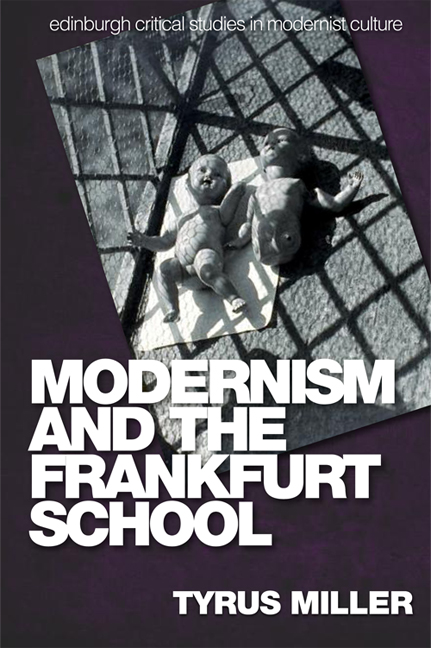2 - Walter Benjamin
Summary
INTRODUCTION: BENJAMIN AND MODERNISM
Walter Benjamin poses his readers and interpreters with a puzzle. A gifted man of letters, cultural theorist, and historian – and by today, one of the most generative thinkers associated with the early Frankfurt School – Benjamin was nevertheless the author of only a few completed, book-length works typical of the mainstream humanistic intellectuals, academics, or philosophers of his time. His corpus of writings consists preponderantly of book reviews, translations, individual essays, and even more miscellaneous notes and sketches, many left unpublished during his lifetime because of the difficult circumstances of inflation, economic depression, and spreading fascism. Benjamin would also swell and resift fragments of long unfinished research projects for years. Initially for circumstantial reasons, but increasingly by intentional design, Benjamin maintained a many-sided, but irregular output of occasional studies, which offer intriguingly partial glimpses of his concerns rather than explicit, discursively exhaustive expositions.
Benjamin's production has typically been divided into his “early” esoterictheologically oriented works (circa 1913–23), his “middle” period of work as a left literary intellectual of Weimar Germany (circa 1924–33), and his “late” period of Marxist-influenced writings in exile in Paris and elsewhere (circa 1934–40). The first period includes a few highly significant essays and programmatic texts such as his unpublished exposition of “Two Poems by Friedrich Hölderlin” (1914–15), his sketch of a theological language-theory called “On Language as Such and on the Language of Man” (1916), and his anarchist-influenced “Critique of Violence” (1921), as well as his dissertation on “The Concept of Criticism in German Romanticism” (1919–20), his introduction to a set of Baudelaire translations, “The Task of the Translator” (1921), and his path-breaking study of “Goethe's Elective Affinities” (1919– 22). The middle period includes such works as the books The Origins of German Tragic Drama (1928) and One-Way Street (1928), as well as major essays on “Surrealism” (1929), “The Image of Proust” (1929), “Karl Kraus” (1931), “Doctrine of the Similar” (1933), “On the Mimetic Faculty” (1933), and “Experience and Poverty” (1933).
- Type
- Chapter
- Information
- Modernism and the Frankfurt School , pp. 35 - 76Publisher: Edinburgh University PressPrint publication year: 2014

